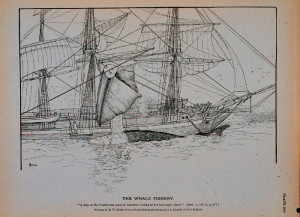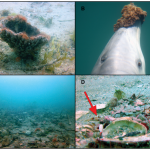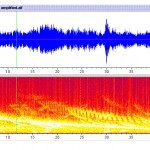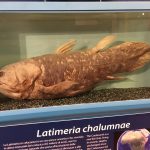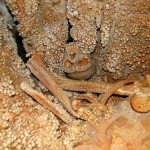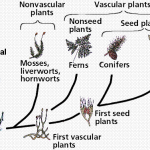This article will summarize the history of whaling of Eubalaena glacialis, including why the right whale was favored, how they were captured, killed and processed, as well as the impacts that hunting had on right whale populations.
Written in conjunction with Daniela Benavides with for BIO 376: Marine Mammals at Duke University, Summer 2013.
Why the Right Whale?
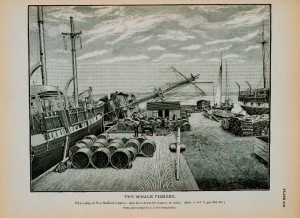
Whale oil casks. Credit: NOAA.
The plentiful blubber of baleen whales, such as right whales, makes them buoyant. By comparison, other whales, such as fin whales, sink immediately after death. Not only do right whales float after death (making them easier to process), they move slowly and stay close to the coast (making them easier to catch), plus they contain copious amounts of oil: all these factors made Eubalaena glacialis the "right whale" to hunt.
Anatomy of the Hunt
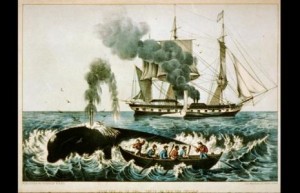
"Whalers harpoon a right whale in this 1856 Currier & Ives print." - SI
From a high vantage point, spotters would locate a right whale (using its distinctive V-shaped blow as one clue), then small boats would race to the animal. With hand harpoons, men would attach floating barrels to the whale, making it difficult for the animal to dive. After the whale fatigued from the effort of fighting the floaters, the men would kill it with large harpoons. For near-shore captures, the men would then wait for high tide to carry the whale to the beach (sometimes the men would row the whale to shore); as the waters receded at low tide, processing could begin. For high seas captures, the whale would be tied to the ship and its fins cut off so that its body could be rotated. Workers would peel off large strips of blubber and throw them into melting pots; the connective tissue would float to the surface to be skimmed off, leaving behind pure oil. This oil was then packaged into storage kegs and could then be transported for its eventual use as candle wax and lamp fuel.
To read a first-hand account of whaling out of a North Carolina village, visit “Historical Role of Fishing in Carteret County” at http://www.downeasttour.com/diamond/hist-role.htm.
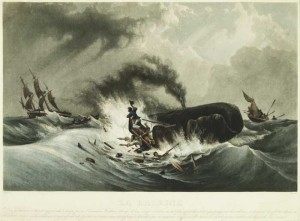
Pursuing whale. Source: Wikimedia
History & Impact of the Hunt
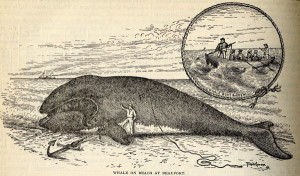
Whale on NC beach. Credit: UNC
Systematic hunting of the right whale started as early as the eleventh century by the Basque people in the Bay of Biscay, which borders France and Spain. In the sixteenth century, they turned their sights to the coast of Labrador in Canada, there taking over 20,000 right and bowhead whales. Starting in the late 1600s, fishing villages on the eastern American coast took up the hunt, continuing until the early twentieth century and removing as many as 10,000 right whales from the western North Atlantic. These local enterprises, combined with larger commercial whaling ships searching the high seas, caused a drastic population decline that whittled thousands of right whales down to today’s few hundred. (See the chapter on Range and Abundance to learn where right whales live.) At this point, whaling of right whales stopped because the species had become commercially extinct; too few of the whales remained to make harvesting them worthwhile. Currently, national and international laws prohibit the taking of right whales; ship strikes pose the greatest modern threat to the species.
References
- North Atlantic Right Whale Consortium. History. http://www.narwc.org/index.php?mc=3&p=10
- IUCN. Eubalaena glacialis. http://www.iucnredlist.org/details/41712/0
- Aguilar A (1986). A review of old Basque whaling and its effect on the right whales (Eubalaena glacialis) of the North Atlantic. Rep. Int. Whal. Commn (Special Issue 10): 1999.
- Reeves & Mitchell (1988). History of Whaling In and Near North Carolina. NOAA Technical Report NMFS 65. http://docs.lib.noaa.gov/noaa_documents/NMFS/TR_NMFS/TR_NMFS_65.pdf

